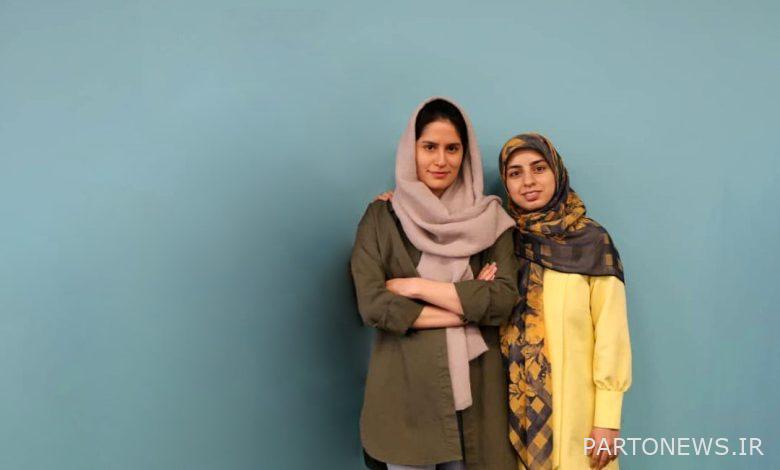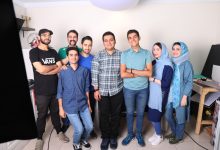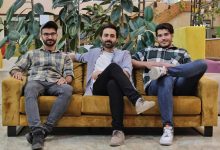
Continuous monitoring the health, is one of the most important points that becomes more important with age. Now imagine that your parents live alone and you are worried about this, especially about cardiovascular diseases (the first cause of death).
Evasa team, with the help of the startup Artificial intelligence It has offered to the market that it can make this foot available at home through a mobile phone. Follow Ecomotive’s conversation with Zahra Roshan, CEO and one of the founders of this startup:
Please introduce yourself:
I have studied medical engineering at Amirkabir University. Less than a year after graduation, I worked in the marketing department of a medical equipment company. After a while, I felt that it was not very compatible with my mood and I preferred the type of challenges of my work to be more scientific. That’s why I entered the field of artificial intelligence. Because its continuation is not limited to the university, it means that you can have a direct product and it is still considered a scientific topic. While searching for artificial bootcamps, I came across Diginext camp. I didn’t even know there was a startup camp. That is, I did not insist on starting a startup from the beginning. But after getting to know each other, we decided to have a little chat and do more research. At the same time, I had taken the entrance exam again and at the same time, I started studying political science. I am currently a student in the last semester of this field.
All these differences in academic fields?
Humanities have been one of my interests. Corona and absentee classes made me able to reach my other interests as well. Because my main field is medical engineering and I was always interested in health technologies, and without wanting to have a gap in my work and education resume, I was able to pursue my other interests with academic formality.
How was your team formed?
Our product is an application that uses a camera to measure a person’s vital signs such as heart rate, breathing, oxygen level, blood pressure, etc. Before the implementation of this idea, we are receiving for two weeks at the DigiNext camp Education We were related to team building. Due to my field of study, my desire is to be more active in the field of health. One of our team members had an idea that I hadn’t even heard of. He also introduced a company outside Iran that was working on such technology. This company uses the basic technology of our work, but focuses more on the market of insurance companies, in other words, provides services to insurance companies. Gradually we gathered other team members. Currently, my colleague Priya Davoudi and I are artificial intelligence developers. Priya has a master’s degree in electronics, and after receiving a bachelor’s degree, she worked for a year at Shuttle Company, which was not related to her field of study, and she left there after a while. Priya was more interested in working in the field of artificial intelligence and she also did not insist on starting a startup. After hearing the idea, he was very interested in its subject and felt that it has a lot of work and believed that this idea can reach a good place and joined our team. Later we talked to other people and fortunately we are expanding the group now.
Does your product have foreign samples?
This product has a foreign sample. A company called “Binah” located in Israel and another company called “Westminds” in England have this product. These two companies are the most similar companies to our startup. Binah provides services to insurance companies. However, after talking with the mentors and reviewing our path, we changed our problem. Companies Insurance Although they are one of our customer groups, they are not defined as our main target. In other words, we changed the problem and showed that this idea can solve many problems in the field of digital health. For this reason, our idea of target market and business strategy changed to a great extent. However, in our research, we found that in addition to the introduced companies, there are other products outside of Iran that are more similar to us in terms of technology and target market.
Considering your field of work, which is the health field, it is a challengeTheWhat were the cases you had with the law?
We changed the road map in many cases where we predicted that we might have problems. For example, at one point we were thinking about entering hospitals, of course we are still thinking about this, but we tried to choose a path with less administrative complications to start with. However, it is still a part of the goal we defined for our product to be able to diagnose some disorders and diseases. Or to give him a history of the person’s health condition, and if necessary, warn him to see a doctor. To be able to have something like this with high accuracy, we need the data available to us not only from healthy people. We also have samples of people with different diseases so that we can provide a product that is suitable for these people, and this requires the cooperation of hospitals. We are preparing proposals to present to hospitals to open this path with the help of some specialist doctors; But this is the part of the work that is the primary challenge. Definitely, if we enter hospitals later, it will be a little more serious.
So, who are the main target audience of this product, who are going to enter the hospital later in the development phase?
We have defined two types of individual customer groups and corporate customers. Our focus at this stage is organizations, although some of them also provide services to individuals through intermediaries. We are focused on telemedicine companies, insurance companies and companies that operate in the field of online medicine and provide services to sick people. The problem that came to the fore during the Corona era was that many people turned to online medicine due to the problems of face-to-face visits, but in this case, the doctor does not have access to all the patient’s symptoms remotely. It means that the doctor should have an accurate data of his patient and not be satisfied with the patient’s history. This lack has made the online visit unable to gain the trust of patients as much as the face-to-face visit, and many people preferred to face the challenges in person and have the doctor examine them in person. According to statistics, every Iranian makes eight visits per year on average, which means a total of 640 million visits per year (which does not include hospitals). Of these, two and a half are tests and the rest are direct doctor visits. In fact, if there are 30 million visits per month, the number of online visits will not even reach 500,000. Which is really a small share. (Statistics from Zhubin Alagband’s speech at the Tehran Electronic Commerce Association)
On the one hand, we wanted to be with these services and provide the possibility of increasing the quality and accuracy of the examination. On the other hand, it is supposed to add an option to save a person’s medical history and receive an alert from the app if needed. In other words, our target group includes people who are at risk of disease. Especially, according to statistics, nearly one third of our population is at risk of cardiovascular diseases, and heart diseases are also the leading cause of death due to disease. In order to have a more accurate understanding of the numbers, before Corona, the percentage of death due to cancer was approximately 8% and cardiovascular disease was announced to be around 30%. Despite this significant difference between the two, usually people are not very sensitive to this issue.
Some of the people who have a high risk of disease and are among our target groups are the elderly people in the society who need to be monitored regularly. Especially people whose family members and children do not have quick access to them. For example, they live in another city or country and do not know about their parents and are always worried about their parents. In addition to giving people access to this data, our goal is to reduce the worry of family members about their parents’ physical condition.
What is your revenue model?
We have two revenue models. For organizations and insurance companies for whom the issue of prevention is very important, we have considered a side service in the form of API and SDK, and for people a subscription service. In this way, people can apply for a subscription for a long time and use the service.
Older people who are far from their families and a little alien to technologyTheand may not use smart phones. You did not face challenges with this group of people?
This was exactly the issue that we considered and checked how many smart devices we have in the country and what percentage of the elderly have access to these smart devices. The result was that especially the group who are not with their family, are likely to have access to a smartphone. One of the challenges we had and the question we are asked is, what is the difference between your product and a bracelet or a smart watch? First of all, access to these devices is much lower than the phone. Second, the customer group of these devices is very different from our target and mostly young people and athletes use them. Asking the elderly to keep it on their hand all the time is a drastic habit change. While – especially with the spread of the Corona virus and the promotion of the use of video calls – people are probably more familiar and comfortable with holding the phone in front of their face. One of our core values is ease of use. In other words, people either know how to work with this product or can learn to work with it very easily.
How have doctors treated this product? Did they welcome or disagree with this product?
According to the medical consultations we had, the doctors’ defensiveness was much lower than we imagined. They were even more surprised that such a strange technology existed. But when we explain to the doctors from a technical point of view, they advise us that only the accuracy of this product is to the extent that they can count on it. This is also completely true and until we achieve a clinical accuracy, we will not enter the market on a large scale. Currently, our average accuracy is 7 beats per minute; While the accuracy approved by FDA is 5 beats per minute. If a device can measure positive-negative accuracy of five, it can apply for FDA certification. Our plan is the same.
How many users do you currently have, organizationally or personally?
We are not currently in the market. We insist on achieving medical precision first, and then go on a massive scale. In our field of activity, trust is very important. It’s not like you can enter it by trial and error and joke with people’s lives. Our startup is attracting initial capital (seed) and we are trying to advance the work faster by attracting experts.
as pluralThespeech structureTheIf you have any remaining points, please let me know:
We are always asked what is a goal? In medicine, “time” is a serious issue, and its importance is getting more attention day by day. We define a golden time for the treatment of all diseases. The more this time passes and people go to the doctor at a later stage, the success rate of the treatment decreases and its costs and side effects increase. This causes unfortunate events, many of which could have been prevented. For example, this issue is more tangible in cancer. “Prevention” is important to doctors and medical science in general, and trying to detect a disease before its symptoms appear. One of the ways to achieve this goal is “health monitoring”. This is the field in which Iwasa operates. We want people to continuously take care of their health before it is too late and reduce the cost of treatment for themselves, their loved ones and the country’s health system. We hope that the sensitivity will increase on this issue and health care will spread among people. In this case, we can say that Iwasa’s mission has been accomplished.
In this way, coaches and diginext camp officials supported us tremendously and have a great contribution to the completion of the product. Many of the tips we learned there are the result of years of experience of experts and if we were to get them outside the camp, we would have to spend many years on it. It is really enjoyable to work with people who are level one themselves, and they also reduce the risk of work for us. I hope we can finally reach a result with the help of these loved ones that will contribute to improving the quality of life of our loved ones.

